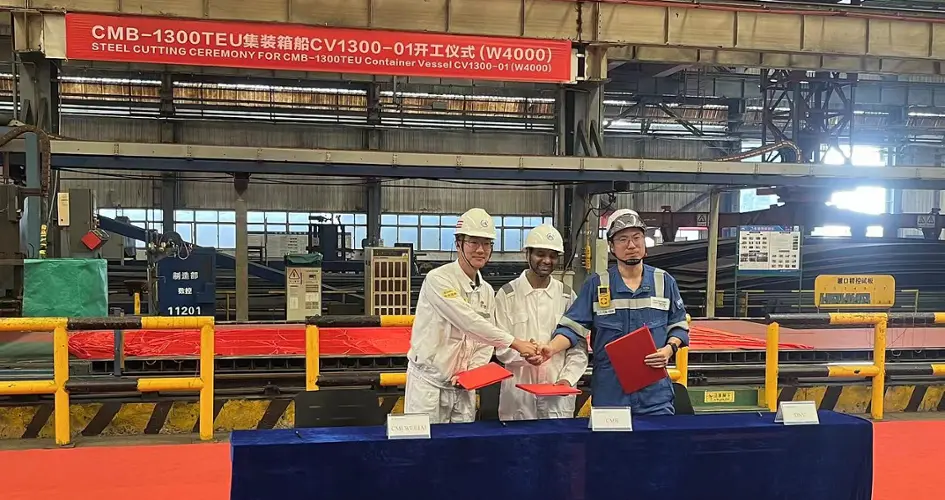Yara Clean Ammonia has initiated construction of the Yara Eyde, billed as the world’s first container vessel designed to run on renewable ammonia.
The steel-cutting ceremony marks the formal start of the project, which aims to test whether ammonia can become a scalable, low-emission fuel for short-sea shipping.
The ship is scheduled to operate along the Oslo–Porsgrunn–Bremerhaven–Rotterdam corridor, linking industrial clusters in Northern and Western Europe. The route choice is strategic: it allows Yara to leverage existing ammonia infrastructure in Norway and continental Europe while testing operational logistics for a fuel still in the early stages of maritime adoption.
Ammonia has long been traded globally as a fertilizer feedstock, giving it an established production and transport base. According to the International Renewable Energy Agency (IRENA), global ammonia production is roughly 185 million tons annually, nearly all derived from fossil fuels. Renewable ammonia, produced via electrolysis and nitrogen capture, remains niche due to its high production costs. Projects such as Yara Eyde are therefore as much demonstrations of market readiness as they are technological milestones.
Hans Olav Raen, CEO of Yara Clean Ammonia, framed the vessel as more than a shipbuilding project, calling it the beginning of “a new chapter in maritime decarbonization.” His comments highlight the wider ambition: positioning ammonia alongside methanol and hydrogen as one of the leading alternative fuels for shipping. Unlike liquefied hydrogen, ammonia can be stored at less extreme temperatures, but it comes with significant safety and emissions challenges. Combustion can produce nitrogen oxides (NOx), while unburned ammonia is a toxic pollutant, requiring advanced engine and handling systems to mitigate risks.
Industry collaboration has been central to the vessel’s development. North Sea Container Line, the project’s shipping partner, emphasized the commercial imperative of making alternative fuels competitive, noting that customer demand for low-carbon logistics is expanding. Yet the economics remain uncertain. Renewable ammonia currently costs several times more than conventional bunker fuel, and without subsidies or carbon pricing mechanisms, large-scale adoption may face significant barriers.
Stay updated on the latest in energy! Follow us on LinkedIn, Facebook, and X for real-time news and insights. Don’t miss out on exclusive interviews and webinars—subscribe to our YouTube channel today! Join our community and be part of the conversation shaping the future of energy.
